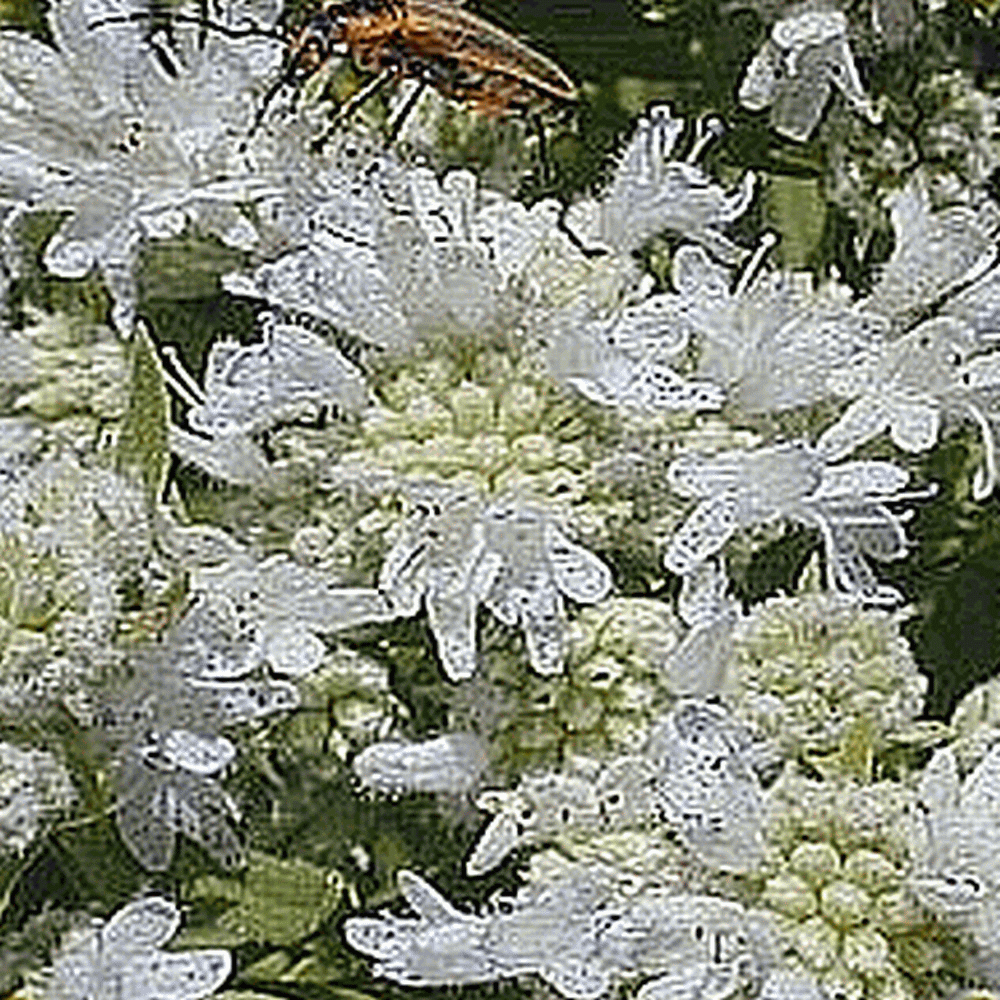

Although the common name is Mountain Mint, it actually does not grow in alpine regions, but rather in open, moist fields and forest edges, often located along the lower elevations of a mountain. The species epithet comes from the Latin Muticus for blunt, perhaps a reference to the dome-shaped or blunt appearance of the apical flowers. It only took a few years for the French botanist and mycologist Christiaan Hendrik Persoon (1761–1836) to assign the proper genus name in 1806. Interestingly, in the same book he described a new genus named Pycnanthemum! Both names are from the Greek to describe the flower structure Brachys means short and Stelma means column while Pyknos means dense and Anthos means flower. It was initially brought to the attention of European botanists by the French botanist Andre Michaux (1746–1802) in 1790, when he found masses of the plant growing in Pennsylvania! Michaux initially named and described the plant as Brachystemum muticum, which was published posthumously in 1803 in his work Flora Boreali-Americana. Mountain Mint is certainly not a new plant to the world of horticulture. Mountain Mint, botanically known as Pycnanthemum muticum, is one such member of the Lamiaceae and it defies my imagination as to why this plant is not more popular among gardeners. However, there are other plants in the mint family or Lamiaceae that display a far greater degree of garden refinement and manners. Typically, our first thought is of a plant with wonderfully fragrant foliage that happens to combine well with Ice Tea and Mint Juleps! Unfortunately, this is matched with an equally unsettling vision of a plant that knows no boundaries and will rapidly spread throughout your garden! True mints are found within the genus Mentha, and their aggressively spreading nature makes them problematic in an ornamental garden. Leaves: Woody Plant Leaf Characteristics: Deciduous Leaf Color: Green White Leaf Feel: Velvety Leaf Value To Gardener: Fragrant Showy Leaf Type: Simple Hairs Present: Yes Leaf Description: Fragrant leaves vary in shape and size and usually have a whitish bloom.Mint is a plant that conjures up a multitude of thoughts and emotions among gardeners.Flowers: Flower Color: Purple/Lavender White Flower Value To Gardener: Fragrant Long-lasting Showy Flower Bloom Time: Fall Summer Flower Shape: Lipped Flower Petals: Bracts Flower Size: Fruit: Fruit Type: Capsule Fruit Description: Dry capsule that doesn't split open.

#Pycnanthemum virginianum full#

Use in naturalized areas, native/pollinator gardens or edible gardens. They can spread by rhizomes but are easily control if spreading is not desired. They grow in moist to dry well-drained soils in sun to partial shade with the best flowering occurring in sun. Most have pleasing foliage when not in bloom and make a great addition to any pollinator garden. The densely packed clusters of flowers come in white to shades of purple and attract many pollinators in July to Sept. The leaves have a strong minty fragrance when crushed and can be used in cooking and making teas. Mountain Mints are a group of plants in the mint family that are native to North America and all areas of NC. Phonetic Spelling pik-NAN-thee-mum Description


 0 kommentar(er)
0 kommentar(er)
